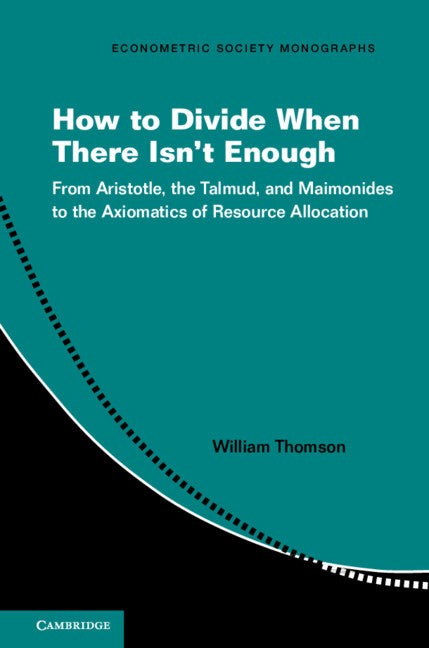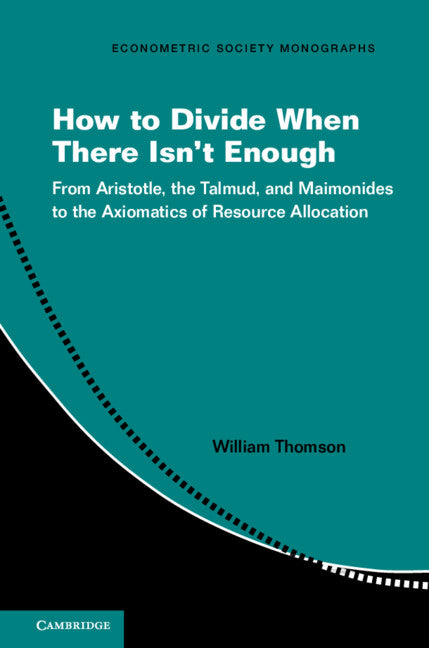Freshly Printed - allow 4 days lead
Couldn't load pickup availability
How to Divide When There Isn't Enough
From Aristotle, the Talmud, and Maimonides to the Axiomatics of Resource Allocation
An introduction to the modern theory of economic design, it develops an up-to-date treatment of the adjudication of conflicting claims.
William Thomson (Author)
9781316646441, Cambridge University Press
Paperback / softback, published 5 September 2019
504 pages, 170 b/w illus. 3 tables
22.7 x 15.2 x 2.9 cm, 0.74 kg
'… this book is, simply, a masterpiece. It is highly recommended for the broad audience of mainstream economists and a must read for those interested in normative economics …' Juan D. Moreno-Ternero, Social Choice and Welfare
How to Divide When There Isn't Enough develops a rigorous yet accessible presentation of the state-of-the-art for the adjudication of conflicting claims and the theory of taxation. It covers all aspects one may wish to know about claims problems: the most important rules, the most important axioms, and how these two sets are related. More generally, it also serves as an introduction to the modern theory of economic design, which in the last twenty years has revolutionized many areas of economics, generating a wide range of applicable allocations rules that have improved people's lives in many ways. In developing the theory, the book employs a variety of techniques that will appeal to both experts and non-experts. Compiling decades of research into a single framework, William Thomson provides numerous applications that will open a large number of avenues for future research.
1. Introduction
2. Inventory of division rules
3. Basic properties of division rules
4. Monotonicity properties
5. Claims truncation invariance and minimal rights first
6. Composition down and composition up
7. Duality
8. Other invariance properties
9. Operators
10. Variable-population model: consistency and related properties
11. Constructing consistent extensions of two-claimant rules
12. Variable-population model: other properties
13. Ranking awards vectors and ranking rules
14. Modeling claims problems as games
15. Variants and generalizations of the base model
16. Summary graphs and tables
17. Appendices.
Subject Areas: Game theory [PBUD], Economic statistics [KCHS], Econometrics [KCH], Economics [KC]


